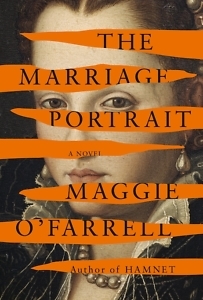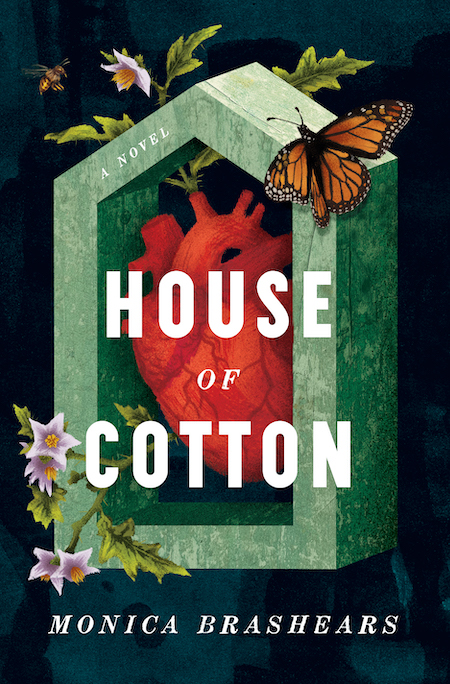Candlelit Suspense
A gripping story set in the waning days of the Italian Renaissance

A sharp feel for textures — brocaded fabrics, sumptuous dinners, jeweled pendants, a slant of Tuscan light — casts a cinematic sheen over Maggie O’Farrell’s gripping, beautiful new novel, The Marriage Portrait, set in the waning days of the Italian Renaissance. The author of acclaimed works such as I Am, I Am, I Am and the widely celebrated Hamnet, O’Farrell here spins a tale that flows like quicksilver beneath heavy gowns and gilt pageantry.
Lucrezia de’Medici, the youngest daughter of Florence’s ruler, Cosimo de’Medici, grows up sheltered in her parents’ ducal palazzo. Along with her sisters and brothers, she’s tutored by private instructors and fussed over by her nurse and mainstay, Sofia, who recognizes the girl’s intellect and rebellious streak and labors to instill virtues of gentility. Lucrezia, though, marches to the beat of her own drummer, skulking through secret passages at night, marveling at the Bengal tiger in her father’s private menagerie.
Even as a child, her enigmatic independence stands out. She coaches her siblings on Latin and Greek lessons and evinces a talent for drawing, quickly mastering principles of perspective. She catches the eye of the older Alfonso, heir to the dukedom of Ferrara, Moderna, and Reggio, who’s betrothed to her older sister, Maria. But when Maria dies of a swift, sudden infection, Alfonso makes a pitch for the girl, and they’re married after her menstrual cycle commences at age 13. The Marriage Portrait shifts back and forth in time, from the arc of Lucrezia’s brief life to the dank, dreary winter of 1561, when, as a 16-year-old, she accompanies Alfonso to a remote hunting lodge, where an epiphany strikes her: He means to kill her, probably with poison.
 O’Farrell deftly crafts her candlelit suspense as she toggles between the salad days of this arranged marriage and the weeks at the lodge, sparking tension from scene to scene as Alfonso transforms from indulgent (if manipulative) husband to a handsome, well-groomed monster. Lucrezia’s still a child when her husband initiates their sexual relationship; O’Farrell subtly draws parallels between then and now, hinting at the terror to come. Nevertheless, there’s something seductive about Alfonso, and Lucrezia leans into her roles as spouse and lady of several manors.
O’Farrell deftly crafts her candlelit suspense as she toggles between the salad days of this arranged marriage and the weeks at the lodge, sparking tension from scene to scene as Alfonso transforms from indulgent (if manipulative) husband to a handsome, well-groomed monster. Lucrezia’s still a child when her husband initiates their sexual relationship; O’Farrell subtly draws parallels between then and now, hinting at the terror to come. Nevertheless, there’s something seductive about Alfonso, and Lucrezia leans into her roles as spouse and lady of several manors.
And yet she senses something’s off. Alfonso dotes on her, but to what end? His consigliere watches her movements like a hawk, sinister, frightening her. The truth dawns slowly on Lucrezia as she sits for a portrait commissioned by her husband (and possibly the inspiration for Robert Browning’s dramatic monologue, “My Last Duchess”). She can’t grasp why her father would have married her off to a murderous prince — until she does. (Cosimo, of course, values a political alliance far more than his daughter’s safekeeping.)
His voice and his words are tender but Lucrezia knows that something else runs beneath them, an underground stream with black, corrosive intent. She feels herself shying away from his touch, as if it burns her. ‘I have to remind you, however,’ he continues, ‘that I do not tolerate challenges to my rule, to any of my decisions or actions. If anyone does so, I punish them. Swiftly and severely. Am I making myself clear?’ … She doesn’t trust herself to speak the words he desires — she fears that other words, ones he won’t like, will come out — so she confines herself to a single nod … The boughs of the hazel tree, stirred by gentle gusts of air, make tortured, evanescent shapes against the lapis sky.
Lucrezia’s daring maneuvers belie her youth; she’s an appealing, resilient heroine.
O’Farrell touches on themes familiar from Hamnet: the fates of women as defined by men, female rebellion, and the consequences of selfhood. Her language is typically lush, with sentences to savor on each page. As Lucrezia sickens in the lodge, she and her trusted servant, Emilia, conspire to escape, the odds overwhelmingly stacked against them. O’Farrell reminds us that power — who has it and who lacks it — lurks at the root of gender relations, even in modern times.
Women’s lives, she suggests, vanish among the seams of history. With the exquisite The Marriage Portrait, O’Farrell rescues the real Lucrezia (whose death was likely caused by a pulmonary embolism) from anonymity, conjuring a tempestuous era in one of this year’s most captivating novels.

Hamilton Cain is the author of This Boy’s Faith: Notes from a Southern Baptist Upbringing and a frequent reviewer for O, the Oprah Magazine; the Minneapolis Star Tribune; and The Barnes & Noble Review. A native of Chattanooga, he lives in Brooklyn, New York.


